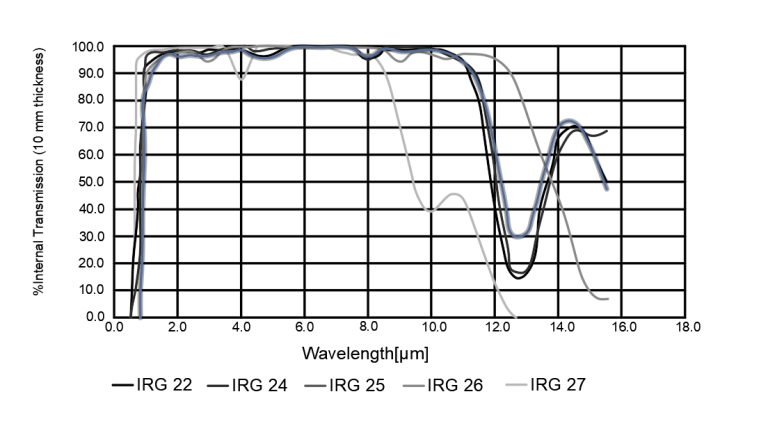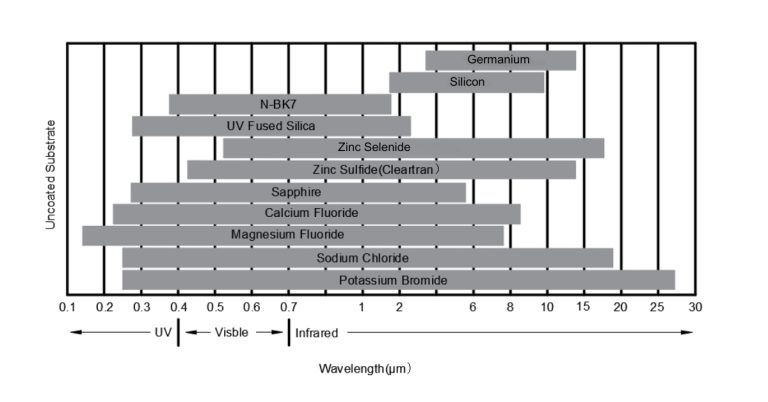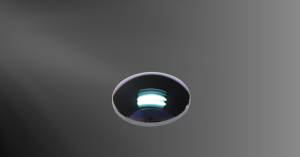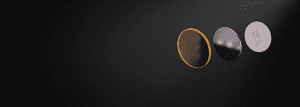Chalcogenide as an Alternative to Germanium
Key Takeaways:
- Chalcogenide glass, made from sulfur, selenium, or tellurium, is a strong alternative to germanium for IR applications.
- It offers high IR transmission with minimal dispersion, making it ideal for imaging and laser systems.
- With flexibility in customization and stable performance across temperature changes, it’s increasingly used due to Germanium export restrictions.
- Chalcogenide’s adaptability enhances system performance, particularly in thermal imaging and precision optics. Consider it for applications needing high IR performance and design flexibility.
If you are looking for an alternative to germanium for your infrared applications, chalcogenide glass maybe the substrate you need. Flexible and adaptable, chalcogenide materials transmit IR light with minimal dispersion and can provide high quality imaging. In the face of germanium export restrictions, many in the optics industry are turning to these substrates to maintain product continuity and mitigate the effect of supply chain disruptions.
What is Chalcogenide Glass?
Chalcogenide glass is a special compound made of a combination of metals and semi-metals with sulfur, selenium, or tellurium. The amorphous glass that results can be molded and pressed into the form desired. Chalcogenide glass has high IR transmission; transmission which does not degrade much over temperature swings. The wavelength range of maximum transmission will depend on the exact formation of a chalcogenide glass, making this substrate highly customizable and well-suited to high performance optics.

Infrared Glass and Materials
There are a number of optical materials suitable for IR use, and which one you choose will depend on the specific requirements of your application. Thermal properties, index of refraction, and transmission are a few of the parameters you will want to consider when making your choice. Some IR substrates include:
- Fused Silica— An affordable material with low birefringence and high homogeneity. IR-grade fused silica is manufactured using a controlled process that reduces the presence of hydroxyl.
- Calcium Fluoride CaF2—Transparent over a wide range (0.13 to 10 μm), CaF2 can be polished to tight specifications. It also has no OH absorption, making it useful for near-IR applications
- Zinc Selenide— Insoluble in water and chemically inert, zinc selenide transmits well between 600nm and 21µm. This substrate is often used in C02 laser systems.
- Zinc Sulfide—-Softer than ZnSe but also dense and inert, zinc selenide transmits best between 8-14 μm.
- Magnesium Flouride — Transmits from -0.12 to 7µm, though transmission in the MWIR range is lower than that of CaF2. MgF is resistant to thermal shock.
- Gallium Arsenide — Chemically stable and very hard, GaAs transmits 40% over the wavelength range 2 and 15µm.
- Sapphire— Combines high transmission and thermal conductivity with extreme hardness and chemical resistance; sapphire is a good choice for optical systems in extreme environments.
- Germanium —Has excellent transmission from 1.8 to 23 μm and high thermal conductivity (60.2 W/(m⋅K)), but is also highly temperature sensitive: by 100 C germanium is nearly opaque. Germanium is currently difficult to source because of export restrictions put in place by China.
- Chalcogenide materials—High transmission in the IR region, and a stable refractive index over temperature shifts make these highly sought after. Index of refraction, dispersion, and glass transition temperature can be tailored during the manufacturing process.

Chalcogenide vs. Germanium
With so many other options out there, why would you look to chalcogenide glass? It turns out that chalcogenide glass can be manufactured to have a broad IR transmission profile very like that of germanium, making it an ideal substitute when germanium is not available. It offers both long wave infrared (LWIR) and mid wave infrared (MWIR) transmission.
In many situations, substituting chalcogenide glass for germanium will improve system performance. Chalcogenide glass lends itself well to the creation of athermalized optical systems, systems that are minimally affected by the presence or absence of heat. The adaptable nature and easy moldability of chalcogenide glass offer optical designers an extra dimension of flexibility whenworking with the substrate.
Infrared lasers is one area in which chalcogenide glass is ideal. IR laser systems require precision IR optics that exhibit minimal dispersion and low loss. Chalcogenides meet these requirements well, enabling laser-based communication, range finding, and even munitions guidance.
Thermal imaging is another field in which chalcogenides are well-poised to take the central position erstwhile occupied by germanium. Originally limited primarily to defense because of the high cost of the optical systems and substrates required, chalcogenide glass may play a major part in making this technology ubiquitously available across research and industry applications— in night vision cars, for instance. Precision thermal imaging, such as that involving the identification of thermal signatures, becomes possible with high performance precision chalcogenide glasses.
If you’d like to talk about how you can take your optical designs to the next level by substituting chalcogenides for the germanium lenses you would have used prior to export restrictions, drop us a line. Our optical designers and engineers can help you design a superior system that uses available materials like chalcogenide glass, and you may be surprised how much performance improves.
GREAT ARTICLE!
Share this article to gain insights from your connections!




